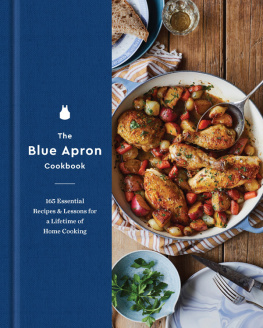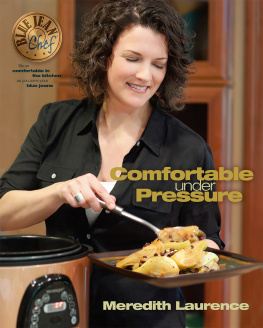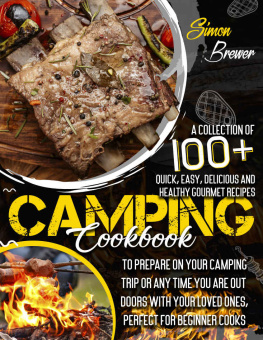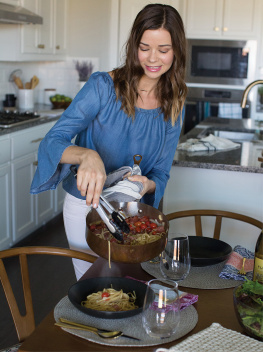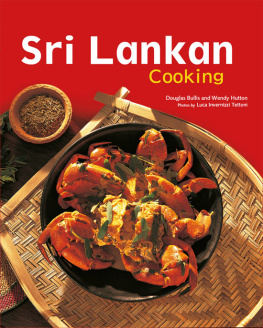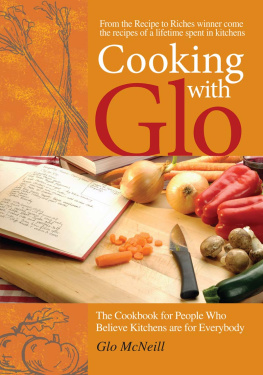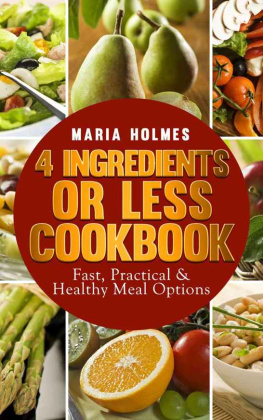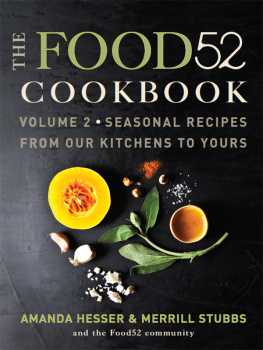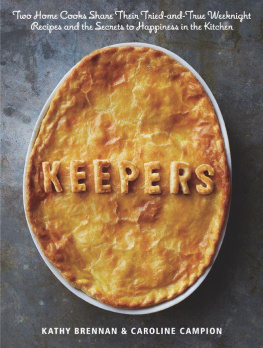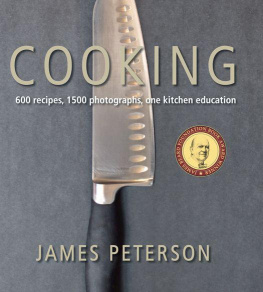

It is common for executive chefs in France to wear a black-and-white-striped apron, but the cooks working under the executive chef traditionally wear a blue apron when they are learning their trade. This is a time-honored tradition that has been part of the kitchen hierarchy for generations. Cooks aspire to donning the black-and-white apron themselves as a symbol of their top status in the kitchen. Many American chefs who apprenticed in Europe continued to wear the blue apron, forgoing the black-and-white apron as a sign of respect to their mentors, a deferential gesture to indicate that they are never done learning in the kitchen. The Blue Apron was, and still is, a constant and humbling reminder that theres always more to learn from each other and ourselves, whether in the kitchen or beyond. This dedication to lifelong learning formed the foundation of our careers as chefs and was in the very DNA of the company. It ties directly into Blue Aprons mission as a company, because the first step toward building a better food system in America is developing the confidence and knowledge to cook at home more.
This foundation of continued learning is built into everything that we do at Blue Apron and extends to relationships with our farm partners, to learning and teaching new techniques through the study of historical food cultures, and to reinventing and building a better food system. The book works as a collection of immersion-based lessons based on a lifetime of learning from the Blue Apron culinary team. In the kitchens of the world-renowned restaurants weve worked in, we learned the skills that remain essential for us to this day: work neat, stay organized, dont mess with the food too muchand that great food always starts with great ingredients.
Once available only to restaurant chefs, fresh and sustainable ingredients are now available to many. Yet, knowing how to turn those ingredients into something spectacular may seem out of reach for novice cooks. The Blue Apron Cookbook will show you how easily you can learn how to cook at home with the right fundamentals. The lessons are fail-safe, because weve made all the mistakes so you dont have to.
Once you start cooking, it becomes an essential and meaningful part of your life, and you may find that its difficult to live without it. Even today, after a long day of work or traveling, the first place many of us head to is to our own kitchens to make a simple, satisfying meal. We continue to cook, and never stop learning, in honor of what the blue apron represents. We hope youll feel the same way.
Happy cooking from our kitchen to yours,
The Blue Apron Culinary Team
This book is organized around cooking essential meals that will teach you how to apply the same fundamental techniques and lessons to a whole range of culinary possibilities. Learning the very basics, for even the simplest of techniques (how to season a chicken before roasting, how to perfectly sear a fillet of fish, how to saut spinach so its not watery), sets you up for success when those lessons are tried and true. We show you that if you know how to roast one chicken, you know how to roast any chicken, whether its spatchcocked, stuffed with lemon and herbs, slathered with spices, or cut into pieces on a bed of root vegetables. If you can braise beef with red wine, you can braise chicken with red curry paste and coconut milk, or lamb with ras el hanout and dried apricots, or pork belly with soy sauce and star anise. If you can whisk together a vinaigrette, you can make an aioli and a mayonnaise from scratch.
Youve learned how to make a beautiful roasted kabocha soup, but now its spring and that soup can be asparagus, or you can use zucchini or corn in summer. We explain the principles behind every important step because knowing the why is what will empower you to take these recipes, explore, experiment, and run wild with your newfound freedom and instincts to make them your own. Once you have this foundation, youll have the confidence and ability to cook almost anything.
Most important, you learn by doing, by being immersed in the work at hand (think of how youd learn Italian much more easily living in Italy than by sitting in a classroom). To learn how to cook, you must get in the kitchen and startthe more you do it, the easier it is. Its like learning an instrument: When you first pick up a guitar, your fingers dont know what to do, but with practice, the movements come instinctively. World-renowned chef Charlie Trotter used to compare cooking to jazz. Once you learn the basics, then you can improvise. With cooking, youll experience the same process. All that repetition slowly becomes intuition, like muscle memory. Even a task like prepping vegetables may seem tedious now, but it gets easier and faster over time.
We dont think of this book as a collection of recipesrather, these pages represent the meals youll create throughout your endless culinary journey. Theyll act as a guide that sets you up for a lifetime of unforgettable experiences in the kitchen with the people and ingredients you cherish most.

In this section, we offer an overview of the basic tools and ingredients youll need to prepare the recipes in this book.
That doesnt mean you need to run out and purchase each and every item on our list before you start cookinginstead, consider this a starting point and handy reference for your developing pantry and arsenal of kitchen equipment. In fact, we believe the best-stocked kitchens have fewer, but smartly chosen, pieces of equipmentmore is not better in this case. We focus on fundamental items that we reach for every day (not gimmicky items to impress your friends) because they will help you cook more efficientlytheres a sense of confidence that comes from being able to reach for what you need.
We all have that drawer of kitchen tools we havent touched in years. Start by taking stock of the tools and equipment you already have; donate or give away things that you never use because they werent built to last (such as anything with a plastic handle or that isnt heat-resistant) or dont have a useful purpose (like that garlic press). It might help to imagine yourself standing in front of the blank canvas of an empty kitchen counter. The following tools and ingredients will gradually occupy that space, and the growing collection (whisks, knives, strainers, and more) will give you a sense of what youre going to learn in this book and provide a map of where well take you. Then well stock your pantry with our favorite kitchen staples, and touch on basic techniques to help you navigate and visualize how recipes will come together. Finally, just before you dig in, we share our Kitchen Mantras that we return to again and again. Keep in mind that this is our initial overview to get you fired upcountless more specific tips appear throughout the book. In other words, well be with you every step of the way.
Stocking Your Kitchen
You dont need fancy gadgets to create an extraordinary mealin fact, the most commonplace tools are often the most useful. Sure, its nice to have a metal fish spatula for flipping a fillet, but in a pinch you can also do it with a metal spoon. (Dont forget that spoons were one of the first tools invented, for a reasontheyre endlessly versatile.) We think the following bare essentials are indispensable for getting dinner on the table.
Next page
